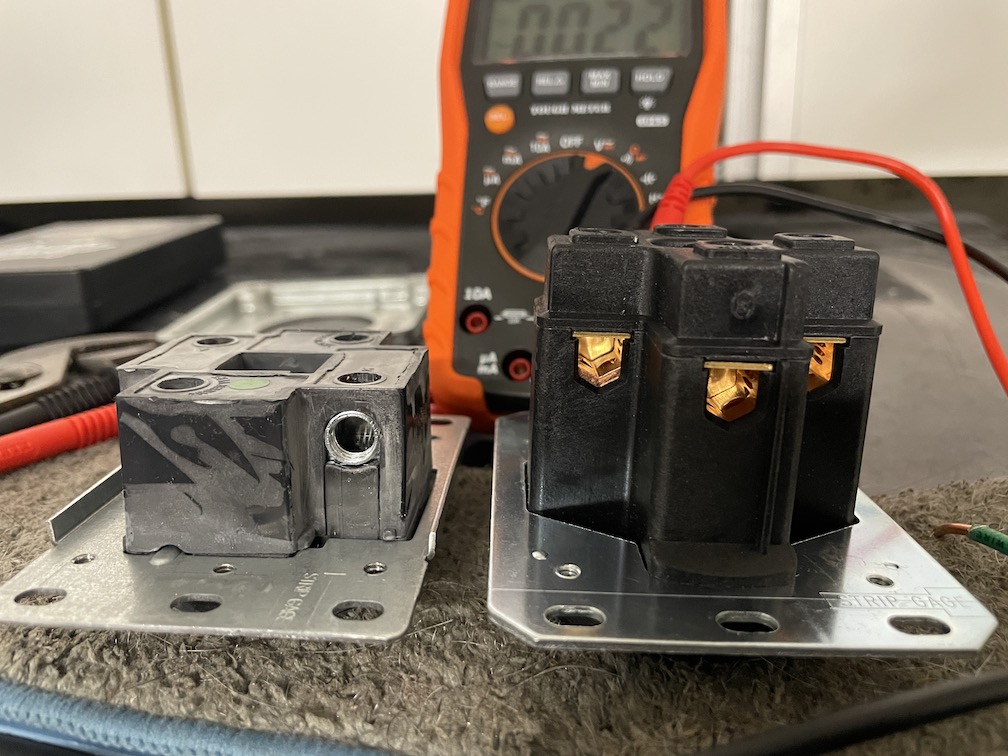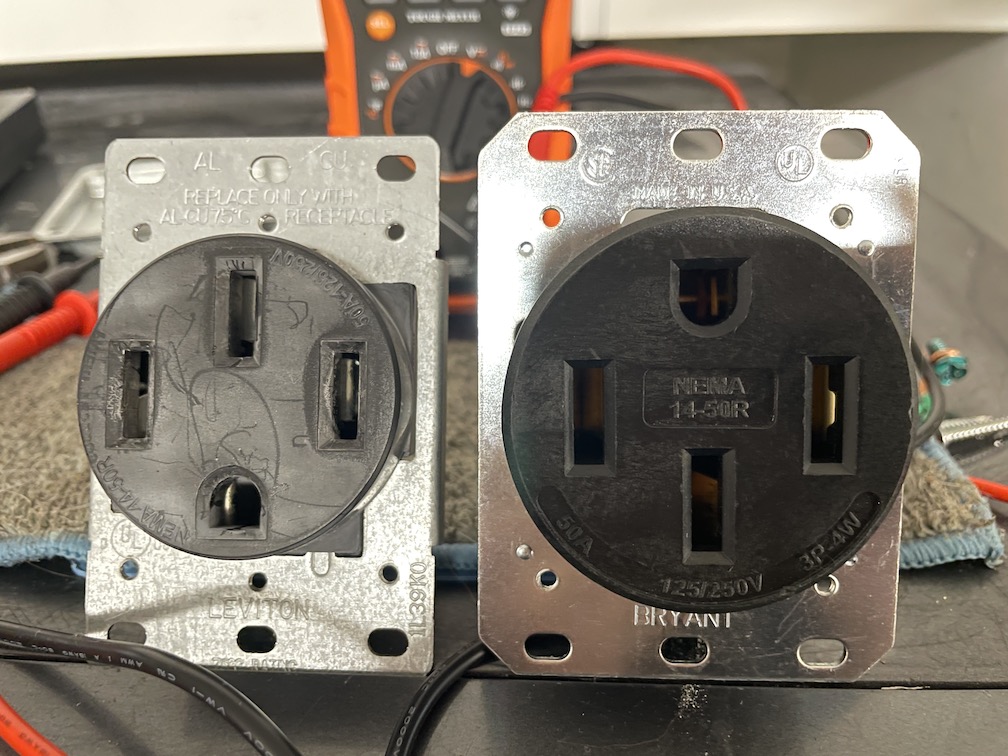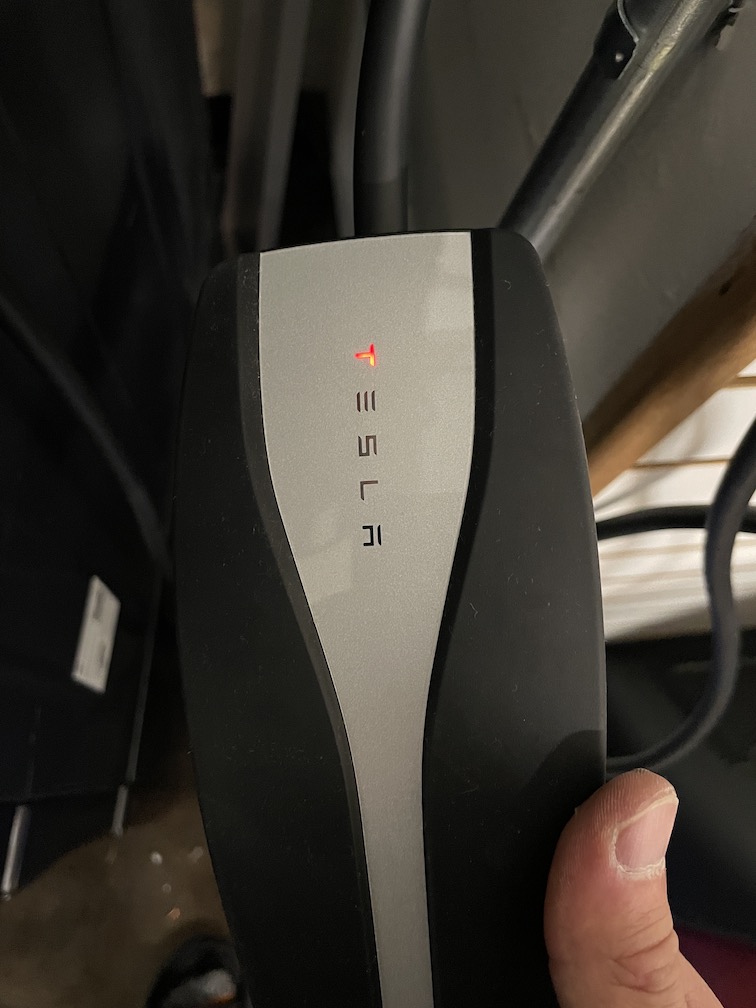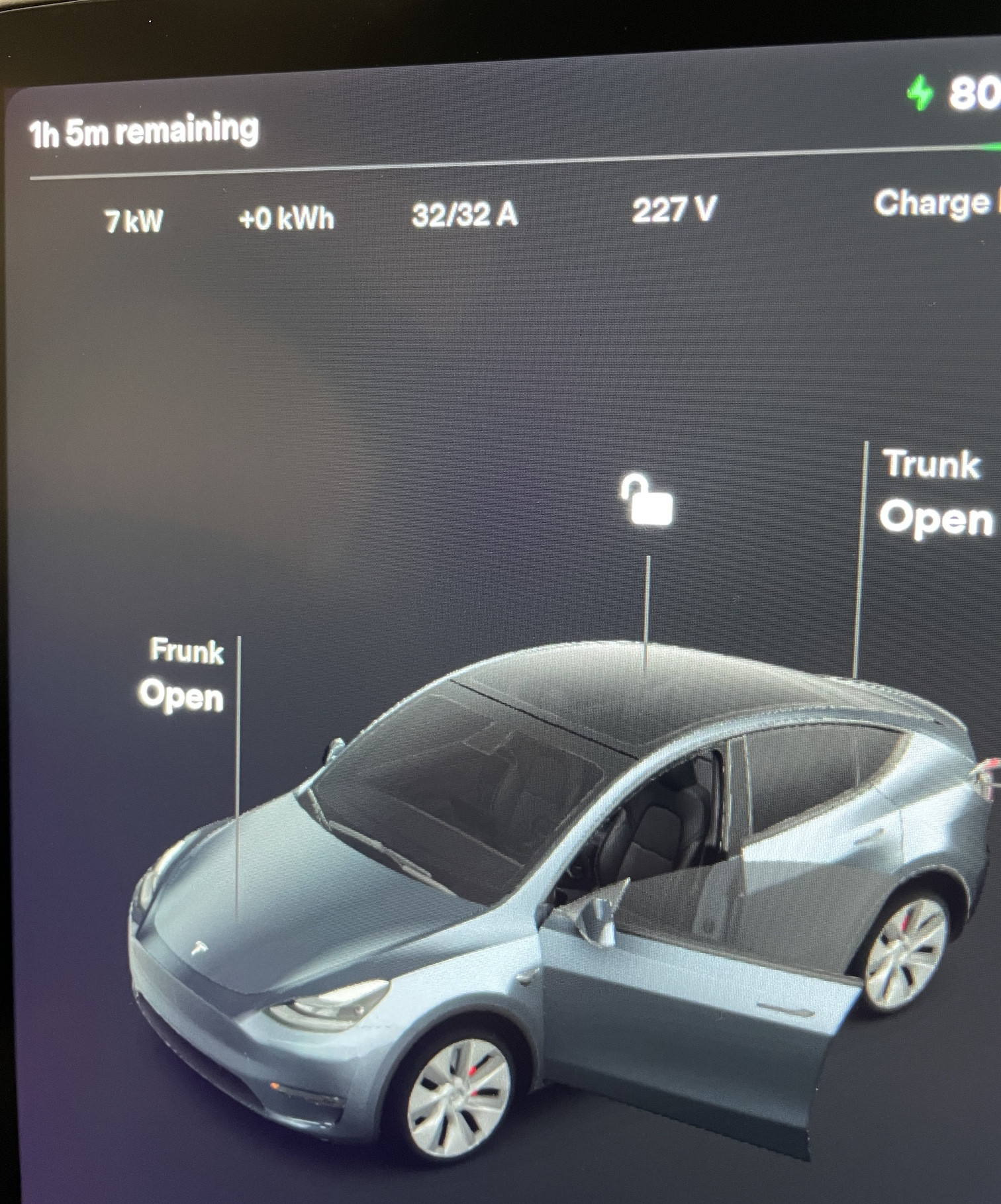Question for you all. Kinda at my wits end with this one, it just doesn't make any sense to me.
I have had the issue of my Tesla charger dropping down to 16 amps from 32 amps after 30 minutes due to high outlet temperature. Turns out the usual culprit is the crappy Home Depot special Leviton 14-50 outlets that get installed. They're weak, aluminum and copper, and can't handle sustained 240V 32 amps for hours on end.
I decided to upgrade to the highly recommended industrial grade Bryant 14-50. It's obviously of tremendously higher quality, copper everything.
The one thing is... I can't get my Tesla charger to work with it. I get an instant red light on the T of the Tesla mobile charger. When I plug my multimeter into the left and right terminals, I get 230V immediately.
I had to change the box to get the new 14-50 to fit, and thought perhaps I had a grounding issue.
To rule things out, I decided to just reinstall the crap Leviton.
Low and behold, boom. All green and all good on the Tesla charger.
What could be wrong here?
According to the Tesla Mobile Connector manual, no green lights and 2 flashing red lights = "Ground loss. The Mobile Connector detects a loss of ground."
Here's my wiring on the new Bryant unit:
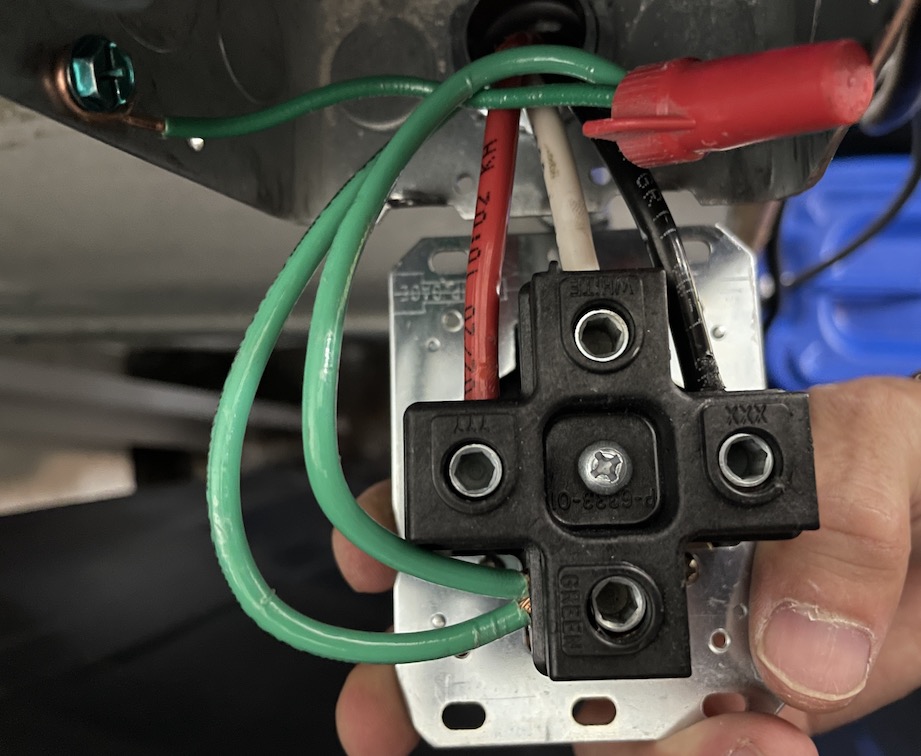
And here are the terminals on the old crappy Leviton:
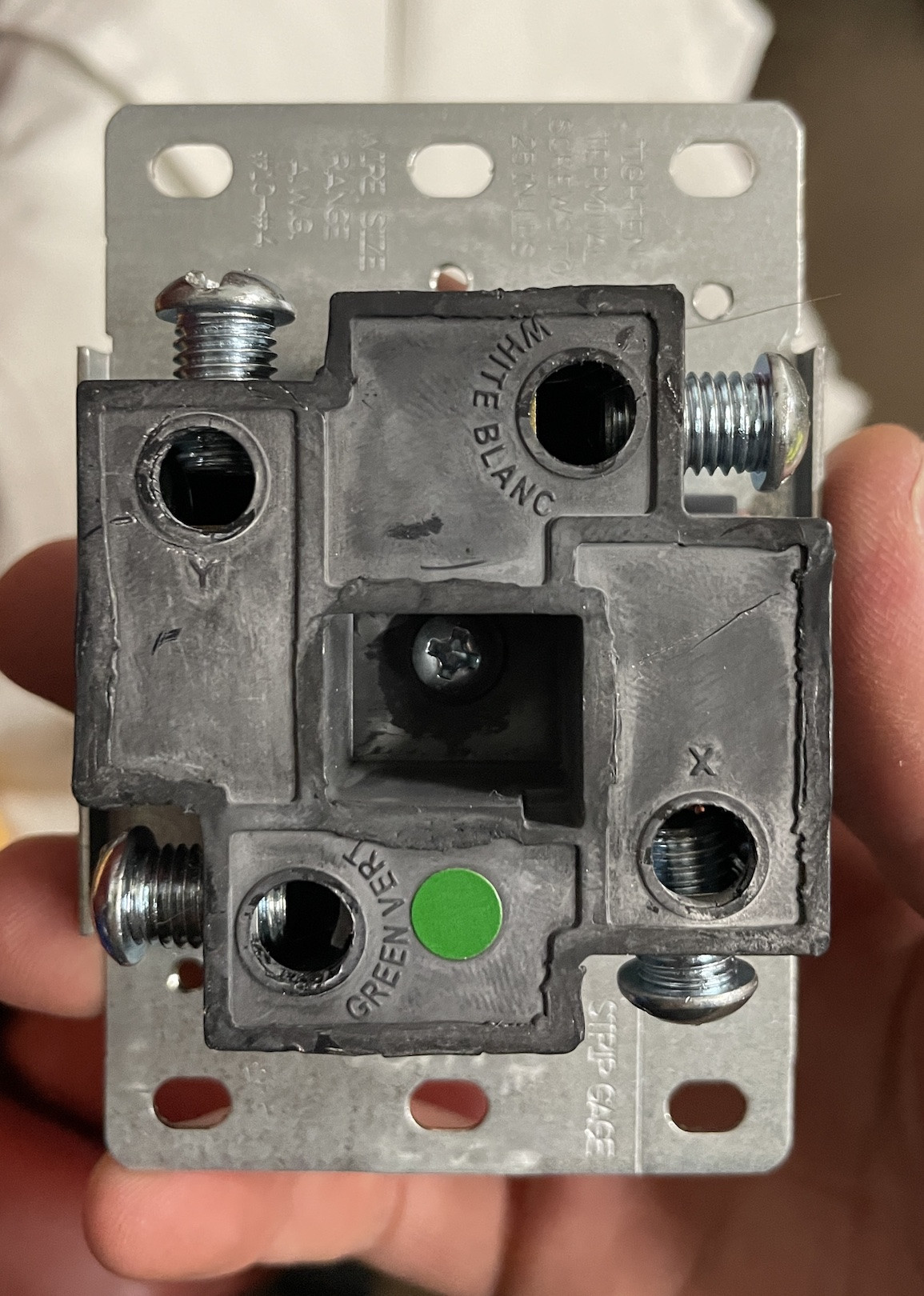
Update:
Made a proper ground this time. Same AWG wire all throughout. Found a trick on YouTube to make excellent connections, so I did just that... wrap the freshly stripped wires together at the end of the insulation with electrical tape to get them wrapped up with all the exposed copper leads tightly bound together, then take linesman's pliers and twist and the strands together gradually and slowly, until they've basically made a single large stranded wire. Then compress at the base, and clip the top edge to even the wire out. Then wire nut it together.
Got my in-lb torque wrench in today, and accurately torqued each lug down to 75 in-lb's as per spec by Bryant/Hubbell.
Still have the grounding error on the Bryant, and still have a happily working Leviton.
Hubbell unit comes in tomorrow, which will be a quick swap. With the count of people who had issues with the Bryant on my reddit thread now up to 5, I'm hopeful it's just a bad unit and the Hubbell will fire up once swapped out.
Please ignore all the extra wire and the hanging receptacle, at this point I'm just wiring it like it's on a test bench. I would obviously clean this up a lot before finalizing the installation. Just showing the new ground pigtail.

